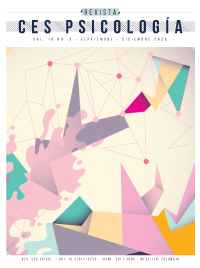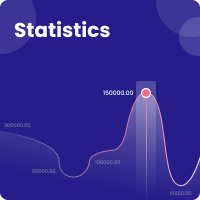Psychometric Properties of the Proactive Personality Scale in schoolteachers in Lima (Peru)
DOI:
https://doi.org/10.21615/cesp.6216Keywords:
Proactive Personality Scale, teachers, school, validity, reliabilityAbstract
The objective was to evaluate the psychometric properties of the Proactive Personality Scale in a sample of teachers from schools in Lima (Peru). Participants were 302 teachers of both sexes (72.20% women) selected through a non-probabilistic sampling of intentional type, whose ages were in the range from 24 to 65 (M = 43.04, DE = 10.75) and who taught at the educational levels of primary and secondary education (75.83% in secondary education). In addition to the Proactive Personality Scale, the Teachers Self Efficacy Scale was applied to assess convergent validity. The results indicate that the Proactive Personality Scale was adjusted to a unifactorial structure (CFI = .949, TLI = .934, RMSEA = .076 y SRMR = .044), there are statistically significant correlations (p <.001) and with a mean effect size (rs> .10) with most of the dimensions of self-efficacy feeling and adequate internal consistency (.89). The Proactive Personality Scale has evidence of validity based on internal structure, convergent validity, and adequate reliability to measure proactive personality in schoolteachers.
Downloads
References
Anwar, M. (2017). Linkages between personality and knowledge sharing behavior in workplace: Mediating role of affective states. Ekonomika a management, 20(2), 102-115. https://doi.org/10.15240/tul/001/2017-2-008
Arcila Franco, L. V., & Guarín Jurado, G. (2015). Pedagogías proactivas como respuesta al devenir político en la educación contemporánea. Plumilla Educativa, 15(1), 105-120. https://doi.org/10.30554/plumillaedu.15.835.2015
Arroyo Vargas, A. J. (2017). Personalidad proactiva y compromiso organizacional en personal civil de una institución militar peruana del Callao (Tesis de licenciatura). Universidad https://repositorio.ucv.edu.pe/handle/20.500.12692/11240
Barrientos, F. A. (2016). Habilidades sociales y emocionales del profesorado de educación infantil relacionadas con la gestión del clima de aula (Tesis doctoral). Universidad Complutense de Madrid. https://eprints.ucm.es/40450/1/T38117.pdf
Bateman, T. S., & Crant, J. M. (1993). The Proactive Component of Organizational Behavior: A Measure and Correlates. Journal of Organizational Behavior, 14(2), 103-118. https://doi.org/10.1002/job.4030140202
Carbajal Sifuentes, P. L. (2017). Personalidad proactiva y capacidad emprendedora de los trabajadores de una empresa dedicada al rubro de telecomunicaciones en el distrito de Independencia (Tesis de licenciatura). Universidad César Vallejo, Lima. https://repositorio.ucv.edu.pe/handle/20.500.12692/3195
Carrillo, L. (2013). Validación de la escala de personalidad proactiva de Crant en los trabajadores de comida rápida (Tesis inédita de licenciatura). Universidad César Vallejo, Lima.
Chand, V. S., Kuril, S., Deshmukh, K. S., & Avadhanam, R. M. (2020). Assessing teacher innovations: expert versus peer ratings. International Journal of Educational Management. https://doi.org/10.1108/IJEM-04-2020-0185
Cohen, J. (1988). Statistical power analysis for the behavioral sciences. Hillsdale, NJ: Lawrence Erlbaum Associates.
Covarrubias Apablaza, C. G., & Mendoza Lira, M. C. (2016). Adaptación y validación del cuestionario sentimiento de autoeficacia en una muestra de profesores chilenos. Universitas Psychologica, 15(2), 97-108. https://doi.org/10.11144/Javeriana.upsy15-2.avcs
Credé, M., Harms, P., Niehorster, S., & Gaye-Valentine, A. (2012). An Evaluation of the Consequences of Using Short Measures of the Big Five Personality Traits. Journal of personality and social psychology, 102(4), 874-888. https://doi.org/10.1037/a0027403
Edwards, P., Roberts, I., Sandercock, P., & Frost, C. (2004). Follow-up by mail in clinical trials: does questionnaire length matter? Controlled Clinical Trials, 25(1), 31-52. https://doi.org/10.1016/j.cct.2003.08.013
Faul, F., Erdfelder, E., Buchner, A., & Lang, A.-G. (2009). Statistical power analyses using G*Power 3.1: Tests for correlation and regression analyses. Behavior Research Methods, 41(4), 1149-1160. https://doi.org/10.3758/BRM.41.4.1149
Fullan, M., & Langworthy, M. (2014). A Rich Seam How New Pedagogies Find Deep Learning. London: Pearson.
Ghasemi, A., & Zahediasl, S. (2012). Normality Test for Statistical Analysis: A Guide for Non-Statisticians. International Journal of Endocrinology Metabolism, 10(2), 486-489. https://doi.org/10.5812/ijem.3505
Gopalakrishnan, A. C., Bhaskaran, S., & Ambujakshi, S. (2020). Relationship between Proactivity and Personal Pedagogical Knowledge in ESD among Pre-service Teachers: Sub-sampling on Social Media Usage and Subject Discipline. Journal of Teacher Education for Sustainability, 21(2), 73-90. https://doi.org/10.2478/jtes-2019-0018
Greenland, S., Senn, S. J., Rothman, K. J., Carlin, J. B., Poole, C., Goodman, S. N., & Altman, D. G. (2016). Statistical tests, P values, confidence intervals, and power: a guide to misinterpretations. European Journal of Epidemiology, 31(4), 337-350. https://doi.org/10.1007/s10654-016-0149-3
Hwang, Y., & Tak, J. (2011). A relation of proactive personality to career success: A mediation role of protean career. Korean Journal of Industrial and Organizational Psychology, 24, 409-428.
Keith, T. Z. (2019). Multiple Regression and Beyond: An Introduction to Multiple Regression and Structural Equation Modeling. New York, NY: Routledge.
Kemper, C. J., Trapp, S., Kathmann, N., Samuel, D. B., & Ziegler, M. (2019). Short Versus Long Scales in Clinical Assessment: Exploring the Trade-Off Between Resources Saved and Psychometric Quality Lost Using Two Measures of Obsessive–Compulsive Symptoms. Assessment, 26(5), 767-782. https://doi.org/10.1177/1073191118810057
Kerlinger, F., & Lee, H. (2002). Investigación del comportamiento: métodos de investigación en Ciencias Sociales. Ciudad de México, México: McGraw-Hill.
Kim, H, S., & Park, I-J. (2017). Influence of Proactive Personality on Career Self‐Efficacy. Journal of Employment Couseling, 54, 168-182. https://doi.org/10.1002/joec.12065
Kline, P. (2000). Handbook of psychological testing. New York, NY: Routledge.
Kong, Y., & Li, M. (2018). Proactive personality and innovative behavior: The mediating roles of job-related affect and work engagement. Social Behavior and Personality, 46(3), 431-446. https://doi.org/10.2224/sbp.6618
Li, C. (2016). Confirmatory factor analysis with ordinal data: Comparing robust maximum likelihood and diagonally weighted least squares. Behavior Research Methods, 48, 936-949. https://doi.org/10.3758/s13428-015-0619-7
Li, M., Liu, Y., Liu, L., & Wang, Z. (2017). Proactive Personality and Innovative Work Behavior: the Mediating Effects of Affective States and Creative Self-Efficacy in Teachers. Current Psychology, 36(4), 697-706. https://doi.org/10.1007/s12144-016-9457-8
Li, M., Wang, Z., Gao, J., & You, X. (2017). Proactive personality and job satisfaction: The mediating effects of self-efficacy and work engagement in teachers. Current Psychology, 36(1), 48-55. https://doi.org/10.1007/s12144-015-9383-1
McDonald, R. P. (1999). Test theory: A unified treatment. Mahwah, NJ: Lawrence Erlbaum Associates.
Ministerio de Educación de Perú. (2017). El Perú en PISA 2015: informe nacional de resultados. Lima: Ministerio de Educación. http://umc.minedu.gob.pe/wp-content/uploads/2017/04/Informe-PISA-2015_ALTA.pdf
Nunnally, J., & Bernstein, I. (1994). Psychometric Theory. New York, NY: McGraw-Hill.
R Core Team. (2020). R: A language and environment for statistical computing. https://www.r-project.org
Seibert, S. E., Crant, J. M., & Kraimer, M. L. (1999). Proactive Personality and Career Success. Journal of Applied Psychology, 84, 416-417. https://doi.org/10.1037/0021-9010.84.3.416
Schumacker, R. E., & Lomax, R. G. (2016). A beginner’s guide to structural equation modeling. New York, NY: Routledge.
Shang, J., & Gan, Y. (2009). Analysis of the effects of the proactive personality on graduate’s career decision making self-efficacy. Acta Scientiarum Naturalium Universitatis Pekinensis (In Chinese), 45, 548-554.
Smith, G. T., McCarthy, D. M., & Anderson, K. G. (2000). On the sins of short-form development. Psychological Assessment, 12(1), 102-111. https://doi.org/10.1037/1040-3590.12.1.102
Tabachnick, B. G., & Fidell, L. S. (2019). Using multivariate statistics. New York, NY: Pearson.
Tschannen-Moran, M., & Woolfolk, A. (2001). Teacher efficacy: capturing an elusive construct. Teaching and Teacher Education, 17(7), 783-805. https://doi.org/10.1016/S0742-051X(01)00036-1
UNESCO. (2012). Informe regional de monitoreo del progreso hacia una educación de calidad para todos en América Latina y el Caribe, EPT 2012. Santiago: UNESCO. https://unesdoc.unesco.org/ark:/48223/pf0000215880
UNESCO. (2014). Estrategia de educación de la UNESCO, 2014-2021. París: UNESCO. http://aprendizaje20.blogspot.com/2017/01/estrategia-de-educacion-de-la-unesco
Uttley, J. (2019). Power Analysis, Sample Size, and Assessment of Statistical Assumptions-Improving the Evidential Value of Lighting Research. LEUKOS, 15(2-3), 143-162. https://doi.org/10.1080/15502724.2018.1533851
Viladrich, C., Angulo-Brunet, A., & Doval, E. (2017). A journey around alpha and omega to estimate internal consistency reliability. Anales de Psicología, 33(3), 755-782. https://dx.doi.org/10.6018/analesps.33.3.268401
Zahoor, A. (2018). Teacher Proactivity Influencing Student Satisfaction and Loyalty Role of Job Crafting and Work Engagement. Vikalpa: The Journal for Decision Makers, 43(3), 125-138. https://doi.org/10.1177/0256090918785046
Zheng, F., Khan, N. A., & Hussain, S. (2020). The COVID 19 pandemic and digital higher education: Exploring the impact of proactive personality on social capital through internet self-efficacy and online interaction quality. Children and Youth Services Review, 119. https://doi.org/10.1016/j.childyouth.2020.105694
Zhou, L., & Shi, J. (2009). Psychometric Properties of the Chinese Translation of the Proactive Personality Scale. Psychological Reports, 105(1), 43-56. https://doi.org/10.2466/PR0.105.1.43-56
Downloads
Published
How to Cite
Issue
Section
License
Copyright (c) 2022 Josselyn María Bojorquez-Paucar, Laura Miluska Cáceres-Julcahuanca, Miguel Barboza-Palomino

This work is licensed under a Creative Commons Attribution-NonCommercial-ShareAlike 4.0 International License.
Each manuscript is accompanied by a statement specifyingThat the materials are unpublished, that have not been previously published in printed formatElectronic and that they will not be presented to any other means before knowing the decision of the magazine. ThroughoutIn case, any previous publication, sea in printed or electronic form, must be made known to the editorial staffWriting The authors attach a signed statement stating that, and the manuscript is acceptedFor publication, the rights of reproduction are the exclusive property of the Journal CES Psychology.


